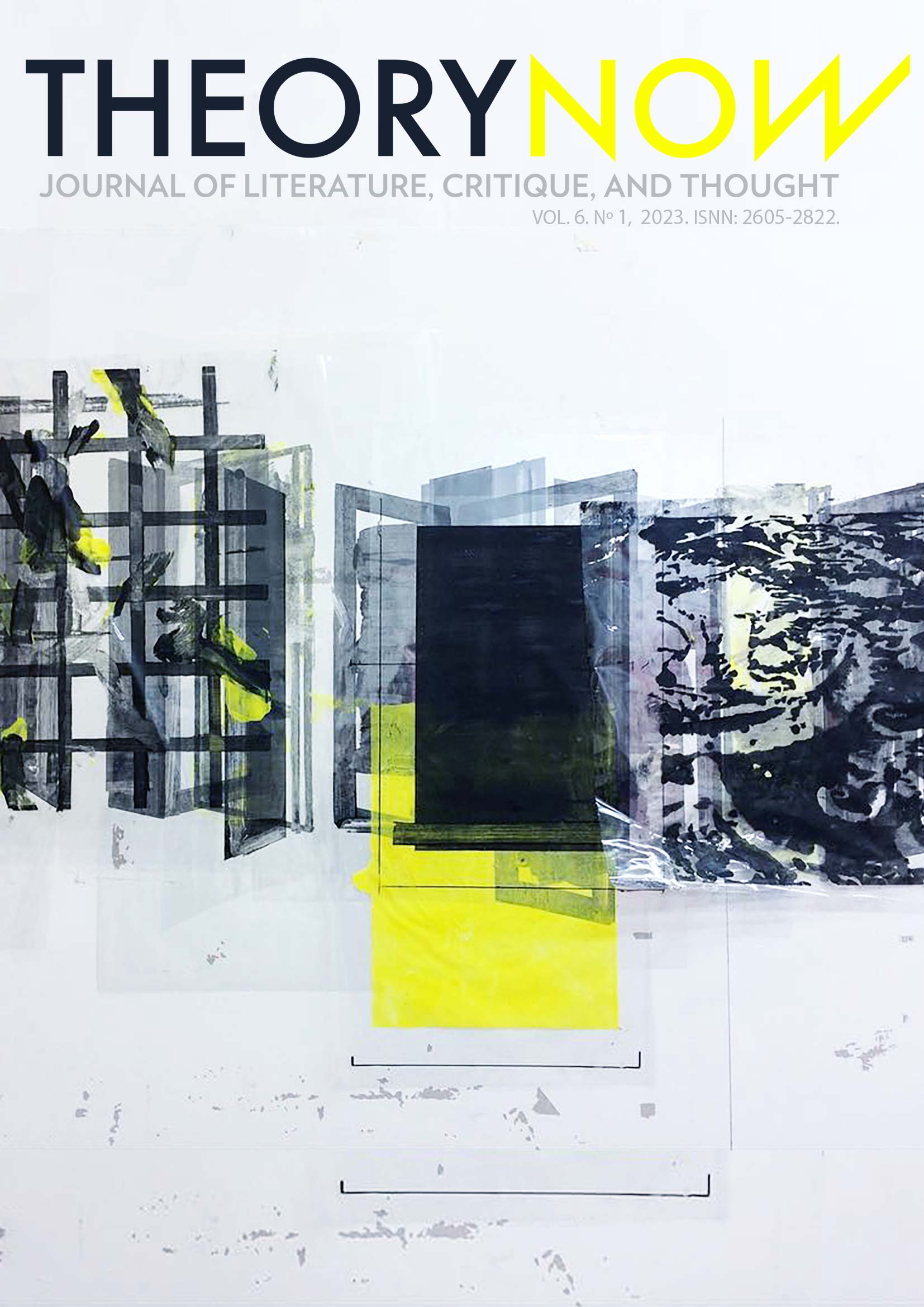Entre lo amniótico y lo semiótico: el cuerpo materno kristeviano en la narrativa femenina británica modernista y contemporánea
DOI:
https://doi.org/10.30827/tn.v6i1.26185Palabras clave:
Maternidad, Julia Kristeva, literatura británica de mujeres, ambivalencia, cuerpo maternoResumen
Desde su influyente estudio Poderes de la abyección (1980) hasta su conceptualización más reciente de la dependencia materna (2014), la ambivalencia concomitante de la maternidad ha sido tanto un tema recurrente en la escritura de Julia Kristeva como su método dominante para demostrar las afinidades entre la transformación corporal y el desarrollo psíquico. Al mismo tiempo, la narración literaria de posguerra de las “elecciones imposibles” de la maternidad, en palabras de Harnett (2019), ha dejado marcas dispersas pero memorables en el canon literario británico contemporáneo. Escritoras británicas, tanto experimentales como consagradas, han intentado documentar el flujo y reflujo afectivo del cuerpo materno, así como la propia maternidad, en tanto que experiencia individual e institución cultural y socioeconómica (Staub 2007). Este ensayo examina estas obras literarias desde una perspectiva kristeviana, intentando un rastreo literario de la “herética” del amor materno (Kristeva 2014) en autoras británicas seleccionadas que han imaginado y articulado heréticamente la ambivalencia maternal en la época de entreguerras y contemporánea. Sirviéndonos de la narrativa post-realista de Olive Moore (1939), Doris Lessing (1988) y Jessie Greengrass
(2018) como trampolín para un análisis kristeviano de los cuerpos maternos, argumentamos que la conceptualización de una herética del amor materno encuentra su contrapartida literaria en una tradición continua de exploración femenina de la madre ambivalente a través de un estilo narrativo experimental que a su vez refleja la construcción de un nuevo cuerpo materno.
Descargas
Citas
Adelman, Janet. Suffocating Mothers: Fantasies of Maternal Origin in Shakespeare’s Plays, Hamlet to the Tempest. New York, Routledge, 2012.
Arya, Rina, and Nicholas Chare. Abject Visions: Powers of Horror in Art and Visual Culture. Manchester, Manchester University Press, 2016.
Bourgeois, Louise. Maman. 1999, London, Tate Modern.
____. Topiary IV. 1999, private collection.
Chodorow, Nancy. The Reproduction of Mothering: Psychoanalysis and the Sociology of Gender. Berkeley, University of California Press, 1978.
Clark, Emily. “Re-Reading Horror Stories: Maternity, Disability and Narrative in Doris Lessing’s The Fifth Child.” Feminist Review, no. 98, 2011, pp. 173–89.
Ferrante, Elena. The Lost Daughter. New York, Penguin, 2008.
Franks, Matt. “Mental Inversion, Modernist Aesthetics, and Disability Exceptionalism in Olive Moore’s Spleen.” Journal of Modern Literature, vol. 38, no. 1, 2014, pp. 107–27.
Greengrass, Jessie. Sight. London, John Murray, 2018.
Hanson, Clare. “The Maternal Body”. The Cambridge Companion to the Body in Literature, edited by David Hillman and Ulrika Maude, Cambridge, Cambridge University Press, 2015, pp. 87–100.
Harnett, Emily. “Doris Lessing’s ‘The Fifth Child’ and the Spectre of the Ambivalent Mother”. The New Yorker, 11 May 2019. www.newyorker.com, https://www.newyorker.com/books/second-read/doris-lessings-the-fifth-child-and-the-spectre-of-the-ambivalent-mother. Accessed August 12, 2022.
Heti, Sheila. Motherhood. London, Vintage, 2018.
Kingsley Erin M. ‘“In the centre of a circle’: Olive Moore’s Spleen and Gestational Immigration”. Feminist Modernist Studies, vol. 1, no.1-2, 2018, pp. 138-156.
Kristeva, Julia. “Motherhood according to Giovanni Bellini”, Desire in Language: A Semiotic Approach to Literature and Art, edited by Leon S. Roudiez, translated by Thomas Gora et al. New York, Columbia University Press, 1980, pp. 237-270.
____. Revolution in Poetic Language, translated by Margaret Walker. New York, Columbia University Press, 1984.
____. “Stabat Mater”, translated by Arthur Goldhammer. Poetics Today, vol. 6, no. 1/2, 1985, pp. 133-152.
____. Powers of Horror: An Essay on Abjection. 1982. Translated by Leon S. Roudiez. New York, Columbia University Press, 2002.
____. “Motherhood Today”. October 28, 2005. http://www.kristeva.fr/motherhood.html. Accessed 2 April 2022. Talk.
____. Kristeva, Julia. “Reliance, or Maternal Eroticism.” Journal of the American Psychoanalytic Association, vol. 62, no. 1, 2014, pp. 69–85,
Lessing, Doris. The Fifth Child. Broadway, NY, Harper Perennial, 2007.
Margaroni, Maria. “‘The Lost Foundation’: Kristeva’s Semiotic Chora and Its Ambiguous Legacy.” Hypatia, vol. 20, no. 1, 2005, pp. 78–98. http://www.jstor.org/stable/3810844. Accessed 23 Aug. 2022.
Marland, Hilary. Dangerous Motherhood: Insanity and Childbirth in Victorian Britain. New York, Springer, 2004.
Maushart, Susan. The Mask of Motherhood: How Becoming a Mother Changes Our Lives and Why We Never Talk About It. London, Penguin, 2000.
Miller, Elaine. Head Cases: Julia Kristeva on Philosophy and Art in Depressed Times. New York, Columbia University Press, 2014.
Moore, Olive. Spleen. 1939. Dallas, TX., Dalkey Archive Press, 1996.
Nikolchina, Miglena. “Motherhood and the Machine.” Journal of French and Francophone Philosophy - Revue de la philosophie française et de langue française, vol. XXI, no 2, 2014, pp 62-69.
Oakley, Ann. Women Confined: Towards a Sociology of Childbirth. New York, Schocken Books, 1980.
Rich, Adrienne. Of Woman Born: Motherhood as Experience and Institution. New York, Norton, 1976.
Sheehy, Maura. “Anonymous: Floaters.” With Culture in Mind, Muriel Dimen edited by Muriel Dimen, New York, Routledge, 2011, 99-106.
Shriver, Lionel. We Need to Talk about Kevin. 2003. London, Serpent’s Tail, 2010. Staub, Susan C. The Literary Mother: Essays on Representations of Maternity and Child Care. Jefferson, NC, McFarland Publishers, 2007.
Susini, Clemente. Anatomical Venus. C. 1770-1790, Florence, La Specola. Yoder, Rachel. Nightbitch. London, Random House, 2021.
Descargas
Publicado
Cómo citar
Número
Sección
Licencia
Theory Now Journal of Literature, Critique, and Thought es una publicación de acceso abierto e inmediato totalmente gratuita, tanto para lectorxs como para autorxs. Lxs autorxs no pagan ningún tipo de tasa por el proceso editorial de sus artículos. Permitimos la lectura, descarga, copia, distribución, impresión, búsqueda, enlace o reutilización con fines no comerciales de todos los trabajos publicados, siempre que se citen la autoría, la revista y el órgano editor. Todo material intelectual publicado en esta revista se encuentra protegido con una licencia de Creative Commons Reconocimiento-NoComercial .
Recomendamos encarecidamente la difusión de los artículos en redes sociales (Facebook, Twitter, LinkedIn, etc.) y científicas (ResearchGate, Academia.edu, etc.), repositorios institucionales universitarios y otros repositorios públicos, blogs y webs personales o institucionales, Google Scholar, ORCID, ResearchID, ScopusID, etc. En cualquier caso, la propiedad intelectual de los artículos y los posibles derechos económicos derivados de ellos son exclusivamente de sus autores.













